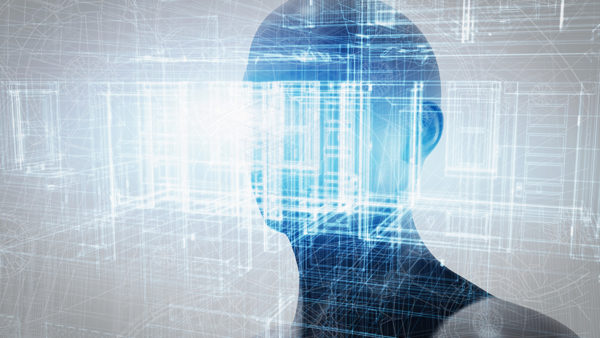AI-driven technologies are transforming the construction industry, but the pace of progress is still hampered by the fear factor, argues Dan Evets.
Fear that it will take jobs, fear that staff will not be able to master complex new systems, fear that it won’t do the job properly … the list is a full one.
But many of those concerns are based on common misconceptions and by tackling them head on, employers – and employees – can reap the rewards of AI technology.
Here are the most common hurdles stakeholders and professionals within construction face when adopting AI – and how they can be addressed.
Across all industries, the most common fear surrounding AI is the belief that it will replace workers. However, it’s important to recognise that AI is not meant to replace professionals, but augment their capabilities and streamline manual processes.
In the construction industry, AI-driven tools can handle repetitive and time-consuming tasks (such as manual scheduling or task sequencing). This won’t replace the roles of professionals focused on these tasks any more than the introduction of digital calendars, spreadsheets, or Gantt charts did.
AI-driven technology will simply elevate their roles to that of more focused planners, concentrating their efforts on higher-level decision-making, creative problem-solving, and collaboration.
Lack of familiarity
Resistance to AI-driven technologies for construction may also stem from a simple lack of familiarity and understanding.
Many construction professionals may not have had exposure to AI-driven tools and without contextual understanding of how these tools can improve or enhance their work, they may be reluctant to adopt new technologies.
To address this, industry organisations, training programmes, and educational initiatives can play a crucial role when coupled with hands-on experience.
The perception that implementing AI-driven tools requires significant time, effort, and financial resources can deter construction professionals from exploring their potential.
However, advances in cloud computing, software-as-a-service (SaaS) models, and user-friendly interfaces have made AI tools more accessible and easier to implement.
Construction professionals need to be realistically informed of the processes and procedures involved in onboarding and adoption of AI-driven tools so they can weigh their immediate efforts against the long-term benefits that AI-driven tools can provide.
Resistant to change
The construction industry is built on the hard-earned wisdom of experienced professionals, but its resistance to change is well documented.
“Construction professionals need to be realistically informed of the processes and procedures involved in onboarding and adoption of AI-driven tools so they can weigh their immediate efforts against the long-term benefits that AI-driven tools can provide.”
Overcoming these mindsets requires some hard proof and unarguable demonstration of the tangible benefits of AI-driven tools. Emphasising increased efficiency, improved accuracy, reduced errors, enhanced collaboration, and better project outcomes, as well as providing documentation of results, can help overcome resistance.
When it comes to ways in which AI-driven tools can revolutionise construction roles, there are many channels for demonstrating value. Some of the most interesting (and immediate) applications of AI for construction include:
a) Iterative design
AI-driven tools facilitate an iterative design process by automating the generation and evaluation of options and alternatives. Professionals involved in design/build phases can input their parameters, constraints, and goals into an AI-driven platform, enabling rapid algorithmic generation of multiple design options. This streamlines the exploration of broad ranges of possibilities, helps optimise designs for performance and efficiency, and facilitates data-driven decision-making.
b) Generative construction sequencing and scheduling
Similar to the iterative design process, AI can optimise the construction process itself. Generative construction sequencing and scheduling platforms leverage AI to parametrise an existing baseline schedule and explore millions of options in minutes to automatically generate optimised schedules.
When unexpected delays or challenges arise, generative construction or parametric construction technology can also help project managers realign a project in real-time, circumventing months of reassessment and lost time. Such AI-driven tools can enhance efficiency, reduce delays, and improve project planning – often resulting in significant savings in both cost and time-to-completion.
c) Risk assessment and predictive analytics
Machine learning algorithms can learn from historical data to identify patterns. For example, forecasting tools can determine which bids are most realistically achievable. Risk forecasting tools can utilise past data to predict future outcomes and avoid problems.
d) Enhanced collaboration and communication
AI-powered collaboration platforms facilitate real-time data sharing, communication, and coordination among stakeholders. This enables seamless collaboration, reduces information gaps, and improves overall project efficiency. This improved communication not only helps circumvent some of construction’s most common challenges, it also reduces the burden of manual updates, allowing project management teams to use their time more effectively and efficiently.
e) Continuous monitoring and maintenance
AI-driven tools enable continuous monitoring of building systems and equipment, identifying anomalies, and predicting maintenance needs. This helps in proactive maintenance planning – reducing downtime, improving sustainability, and optimising asset performance throughout the building’s entire lifecycle, all while reducing management burden.
We should not fear AI, and there are massive commercial advantages awaiting those companies that adopt it.
By proactively embracing the use of AI technologies, construction professionals can make more informed decisions, improve their communication and streamline manual tasks and processes – all the while positioning themselves to benefit from construction’s next big evolution.
Dan Evets is vice-president for strategic accounts at ALICE Technologies
Don’t miss out on BIM and digital construction news: sign up to receive the BIMplus newsletter.
The post Taking the fear factor out of AI appeared first on BIM+.


